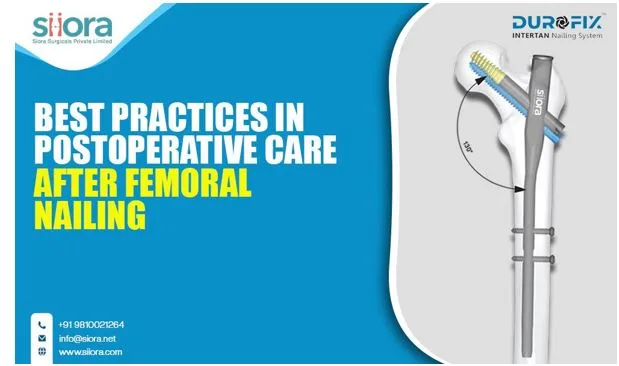Best Practices in Postoperative Care After Femoral Nailing
Breaking a femur is a life-changing experience. The surgery itself—intramedullary intertan femoral nail—does a great job at stabilizing the bone, but if you ask most patients, the real challenge starts afterward. Postoperative care is what decides how quickly and how well someone gets back on their feet. I’ve seen patients bounce back faster because they followed small but crucial steps in recovery, while others struggled simply because they ignored basic aftercare. Let’s go over what actually makes a difference once you leave the operating room.
The First Few Days: Comfort and Caution
The first 48 to 72 hours are usually about managing pain and avoiding surprises. Pain can feel overwhelming in the early days, but proper medication—usually a mix of painkillers rather than a single drug—keeps it manageable. And here’s why it matters: patients who are comfortable tend to move sooner, and movement is directly linked to faster recovery.
At the same time, doctors and nurses will keep checking the operated leg—feeling the pulses, checking sensation in the toes, watching for swelling that doesn’t look right. These things may not sound dramatic, but they prevent big complications later on.
Taking Care of the Wound
Here’s a common question: “Can I peek at the stitches?” The answer is—only when your doctor tells you to. The dressing needs to stay clean and dry. Infection is the biggest avoidable risk in the first couple of weeks. Keep it simple: don’t let the bandage get wet, don’t scratch around the incision, and if you see fluid, redness, or smell something odd—call your doctor.
Dealing With Swelling
Everyone deals with swelling. The trick is not to panic, but to manage it. Propping the leg on pillows, using ice in short intervals, and moving your ankle and toes often go a long way. Some surgeons recommend compression stockings, especially if there’s a risk of clotting. Think of it this way—circulation is your friend. Whatever keeps the blood moving usually helps.
Why Movement Matters More Than You Think?
Many people assume they should “rest until cured.” Ironically, rest is the enemy after a femoral fracture. The nail inside the bone is strong enough to provide stability, which means most patients can start gentle movement quickly. Physical therapists guide these early steps, often beginning with bending and straightening the knee in bed. Depending on the fracture, weight bearing might be delayed, but patients are surprised when they’re asked to stand with support just a few days after surgery. Movement strengthens muscles, keeps joints from stiffening, and makes clots less likely—a triple win.
Physiotherapy: The Hard but Necessary Part
Let’s be honest—rehab isn’t fun. Patients often groan when told to do daily knee bends or thigh muscle squeezes. But those who push through usually get back to walking faster. Early physiotherapy is about preventing stiffness. Later, it’s about rebuilding power in the thigh and hip muscles. Skipping sessions or doing them half-heartedly always shows up later in a limp or weakness.
Follow-Ups Aren’t Formalities
Appointments after discharge aren’t just for taking stitches out. They help the surgeon see if the bone is healing, if the nail is in place, and if you are walking correctly. X-rays are part of the routine, but so are simple conversations. Many times, a patient will casually mention “a clicking sound” or “sharp knee pain,” and that leads to early correction of problems before they become serious.
Lifestyle and Nutrition: The Overlooked Helpers
Strong bones need more than hardware. Eating protein-rich food, adding calcium and vitamin D, and avoiding smoking are straightforward but powerful tools for healing. Alcohol too slows bone repair, so keeping it minimal matters. Once the doctor clears it, light activities like cycling or swimming can safely rebuild stamina without stressing the fracture site.
Closing Note
Surgery fixes the break, but recovery is a team effort between the patient, their medical team, and their daily choices. You don’t need to overcomplicate it—control pain, take care of the wound, start moving, show up for follow-ups, and stick with physiotherapy. Do these consistently, and chances are high you’ll walk back into your old routine stronger, more confident, and without lasting disability.
If you want to learn more about advanced orthopedic implants or explore other healthcare products, book your visit at WHX Dubai 2026.




